Rift Valley fever virus incorporates the 78 kDa glycoprotein into virions matured in mosquito C6/36 cells
- PMID: 24489907
- PMCID: PMC3905018
- DOI: 10.1371/journal.pone.0087385
Rift Valley fever virus incorporates the 78 kDa glycoprotein into virions matured in mosquito C6/36 cells
Abstract
Rift Valley fever virus (RVFV), genus Phlebovirus, family Bunyaviridae is a zoonotic arthropod-borne virus able to transition between distant host species, causing potentially severe disease in humans and ruminants. Viral proteins are encoded by three genomic segments, with the medium M segment coding for four proteins: nonstructural NSm protein, two glycoproteins Gn and Gc and large 78 kDa glycoprotein (LGp) of unknown function. Goat anti-RVFV polyclonal antibody and mouse monoclonal antibody, generated against a polypeptide unique to the LGp within the RVFV proteome, detected this protein in gradient purified RVFV ZH501 virions harvested from mosquito C6/36 cells but not in virions harvested from the mammalian Vero E6 cells. The incorporation of LGp into the mosquito cell line - matured virions was confirmed by immune-electron microscopy. The LGp was incorporated into the virions immediately during the first passage in C6/36 cells of Vero E6 derived virus. Our data indicate that LGp is a structural protein in C6/36 mosquito cell generated virions. The protein may aid the transmission from the mosquitoes to the ruminant host, with a possible role in replication of RVFV in the mosquito host. To our knowledge, this is a first report of different protein composition between virions formed in insect C6/36 versus mammalian Vero E6 cells.
Conflict of interest statement
Figures
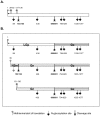
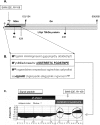
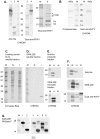


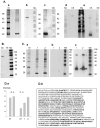
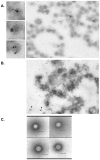
Similar articles
-
Creation of Rift Valley fever viruses with four-segmented genomes reveals flexibility in bunyavirus genome packaging.J Virol. 2014 Sep;88(18):10883-93. doi: 10.1128/JVI.00961-14. Epub 2014 Jul 9. J Virol. 2014. PMID: 25008937 Free PMC article.
-
Characterization of the Molecular Interactions That Govern the Packaging of Viral RNA Segments into Rift Valley Fever Phlebovirus Particles.J Virol. 2021 Jun 24;95(14):e0042921. doi: 10.1128/JVI.00429-21. Epub 2021 Jun 24. J Virol. 2021. PMID: 33952635 Free PMC article.
-
Development of monoclonal antibodies to Rift Valley Fever Virus and their application in antigen detection and indirect immunofluorescence.J Immunol Methods. 2018 Sep;460:36-44. doi: 10.1016/j.jim.2018.06.006. Epub 2018 Jun 9. J Immunol Methods. 2018. PMID: 29894749
-
Molecular biology and genetic diversity of Rift Valley fever virus.Antiviral Res. 2012 Sep;95(3):293-310. doi: 10.1016/j.antiviral.2012.06.001. Epub 2012 Jun 16. Antiviral Res. 2012. PMID: 22710362 Free PMC article. Review.
-
[Rift Valley fever virus].Uirusu. 2004 Dec;54(2):229-35. doi: 10.2222/jsv.54.229. Uirusu. 2004. PMID: 15745161 Review. Japanese.
Cited by
-
Rift Valley Fever: Important Considerations for Risk Mitigation and Future Outbreaks.Trop Med Infect Dis. 2020 Jun 2;5(2):89. doi: 10.3390/tropicalmed5020089. Trop Med Infect Dis. 2020. PMID: 32498264 Free PMC article. Review.
-
Livestock Challenge Models of Rift Valley Fever for Agricultural Vaccine Testing.Front Vet Sci. 2020 May 27;7:238. doi: 10.3389/fvets.2020.00238. eCollection 2020. Front Vet Sci. 2020. PMID: 32528981 Free PMC article. Review.
-
A Rift Valley fever mRNA vaccine elicits strong immune responses in mice and rhesus macaques.NPJ Vaccines. 2023 Oct 27;8(1):164. doi: 10.1038/s41541-023-00763-2. NPJ Vaccines. 2023. PMID: 37891181 Free PMC article.
-
Rift Valley fever virus Gn V5-epitope tagged virus enables identification of UBR4 as a Gn interacting protein that facilitates Rift Valley fever virus production.Virology. 2022 Feb;567:65-76. doi: 10.1016/j.virol.2021.12.010. Epub 2022 Jan 7. Virology. 2022. PMID: 35032865 Free PMC article.
-
A Hyper-Attenuated Variant of Rift Valley Fever Virus Generated by a Mutagenic Drug (Favipiravir) Unveils Potential Virulence Markers.Front Microbiol. 2021 Feb 9;11:621463. doi: 10.3389/fmicb.2020.621463. eCollection 2020. Front Microbiol. 2021. PMID: 33633696 Free PMC article.
References
-
- Collett MS, Purchio AF, Keegan K, Frazier S, Hays W, et al. (1985) Complete nucleotide sequence of the M RNA segment of Rift Valley fever virus. Virology 144: 228–245. - PubMed
-
- Torborg Kakach L, Suzich JA, Collett MS (1989) Rift Valley fever virus M segment: Phlebovirus expression strategy and protein glycosylation. Virology 170: 505–510. - PubMed
Publication types
MeSH terms
Substances
LinkOut - more resources
Full Text Sources
Other Literature Sources
Medical
Molecular Biology Databases
Miscellaneous

